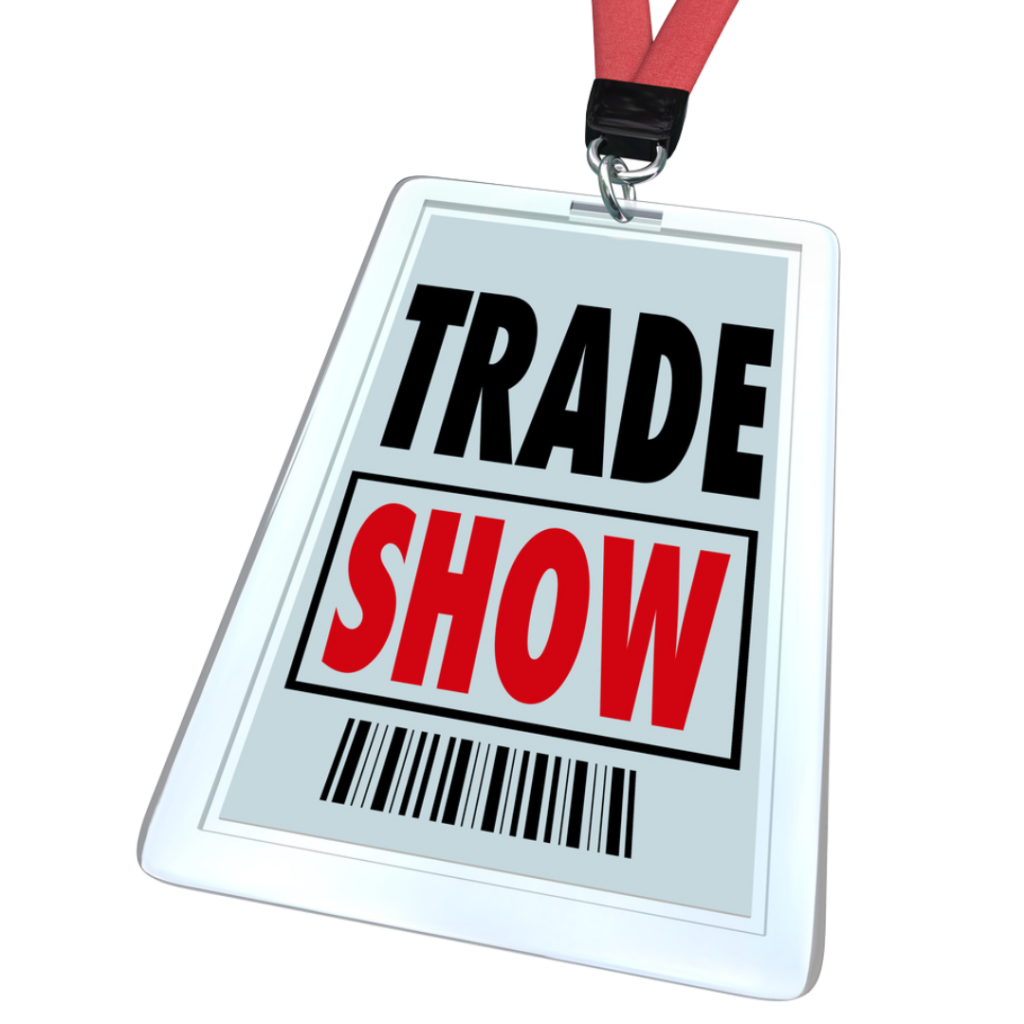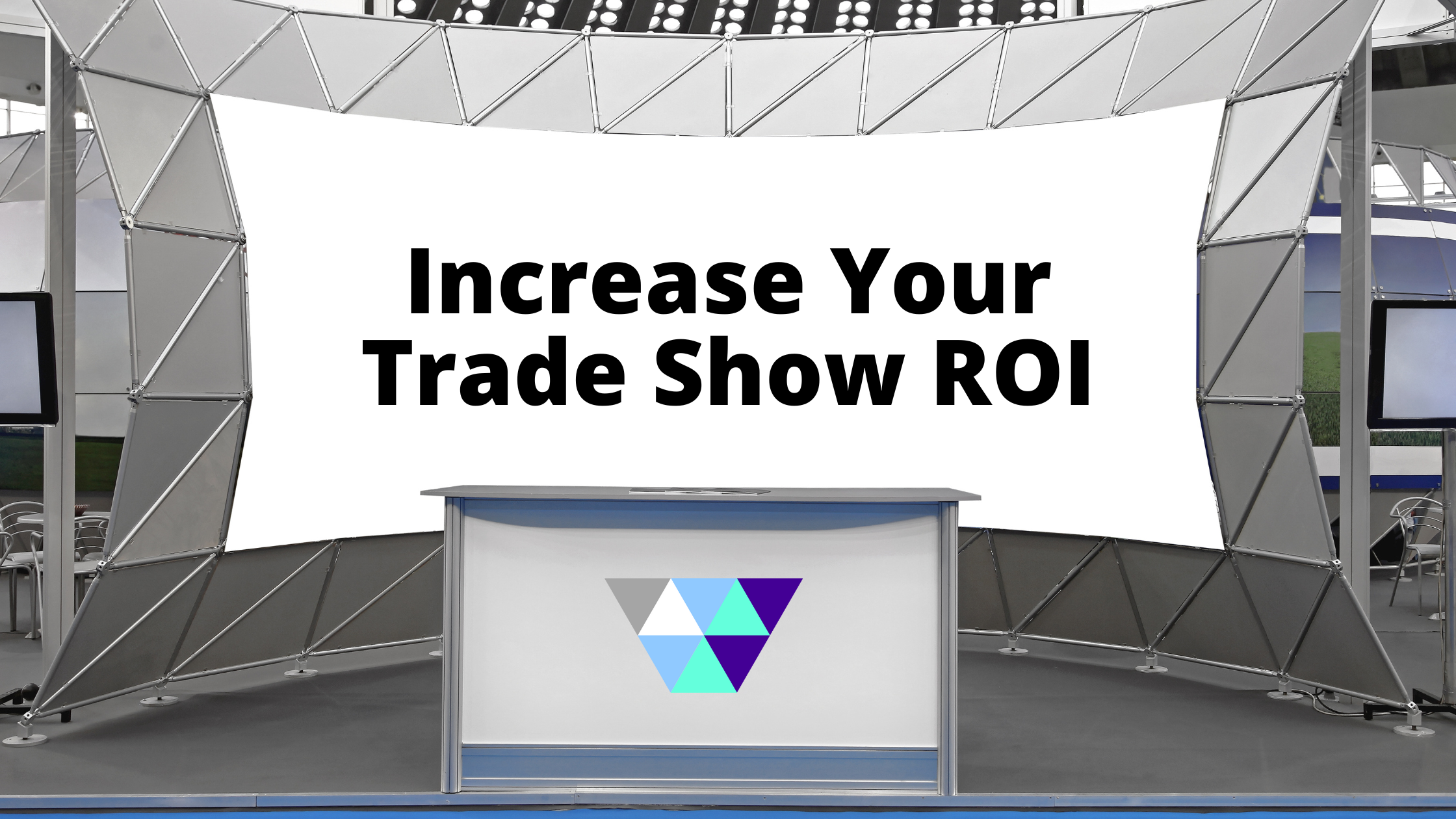Trade shows are an excellent opportunity for companies of all sizes to showcase new products, gather feedback, and move prospects down the sales funnel. In fact, over 90% of trade show attendees say they are looking for new goods and services.
However, most exhibitors don’t have a solid plan for making sure they see a return on their investment (ROI). Sure, the process of evaluating and reporting your ROI can be difficult – starting weeks before the event begins and lasting months after it has ended – but that doesn’t mean you should just let your marketing dollars disappear down the drain.
Important Trade Show Metrics

Planning to exhibit at a trade show event? A recent survey by EXHIBITOR shows that 56% of companies in the U.S. participated in a trade show in 2021, while 70% plan to participate in 2022, and 82% plan to participate in 2023. This means things are only going to get bigger and better from here.
When it comes to trade shows and your key performance indicators, two metrics are equally important – return on objective and return on investment.
- Return on objectives is a measure of how participating in a specific trade show helps the company meet its defined non-sales objectives. Unlike ROI, your return on objectives is mostly empirical and depending on the objective, can likely be measured right after the show has ended. This is determined by your S.M.A.R.T goals and the reasons your team is attending a particular event, such as: making connections and building better relationships. For new customers, track how they heard about your company, if they have met with you in the past and where, and what that experience was like for them.
- Return on investment is a measure of how much revenue a trade show generated for a company compared to the associated costs of participating. To calculate, use the formula: (Revenue – Investment) / Investment.
The formula Cost of Show / Leads can also help you determine any spending in advance of the show. You should already have a roundabout idea of how much revenue a given lead should earn you.
Keep your industry or niche in mind when setting goals for the number of meetings or closed deals you aim to achieve. For high-ticket products or services, a team may only need to finalize a handful of sales per day or per trade show in order to come out on top, while for others it may take dozens or hundreds. In order to meet your revenue targets, break down your average deal size in addition to your cost per lead.
What percentage of leads result in a purchase? A close rate calculates that for you. One, it allows you to evaluate the effectiveness of your lead generation tactics. Two, it can help you prioritize future shows as you can estimate the number of sales likely to come from the number of leads collected. To calculate, divide the total number of leads that are converted by the total number of leads and then multiply by 100.
What is your conversation rate? Keep a close eye on how many meetings, or even seemingly casual conversations, your team has on each day of a trade show and determine your conversion percentage. Trade show sales metric data suggest that most businesses should aim for above a 30% conversion rate, while anything under 20% leaves room for improvement. By identifying if your team is converting sales during the event, you can more readily adapt your approach and improve your meeting effectiveness.
Collecting data and information is a critical part of the trade show ROI evaluation process. Decide which method, process, or software you will need to keep your research and data organized.
While many aspects of your trade show can be recorded, keeping track of as many lead details as possible will help you when tracking and moving prospects down your sales funnel. If you have attended more trade shows in the past, use that data to help you make more informed decisions about upcoming shows.
Experts suggest starting with one or two of your most important shows; specifically, one that has been historically successful and one that’s been on the margins. By applying the same evaluation technique to both shows, you’ll learn more about what makes a show “successful”. The process of determining ROI on trade shows will get easier as you attend more events, and get a better handle on how many leads can be expected per show.
10 Tips to Maximize Your Trade Show Investment
Once you’ve gone over your ROI and other key metrics, you need to determine a game plan to prepare for the show. A good trade show booth with an effective marketing strategy can realistically generate an average of 5-6 leads per hour, which means a company can have up to 48 qualified leads in 8 hours. To do this, staff at your booth need to be prepared, disciplined, and motivated to speak with your potential customers.
- Make a plan
Having a set plan in place for you and your team is critical for maximizing your ROI. While deciding what you need for a particular exhibit, get a feel from your team on what marketing materials or presentation plans are needed, what you need to have shipped to the event, and their thoughts on who should attend. The costs of obtaining these materials or resources are critical to an accurate ROI calculation. You should also prepare your elevator and quick pitches so they are ready to go on your event day.
- Create a budget
Creating and following a budget is essential when participating in trade show events. Keep track of what you spent and what your budget was and see how far off you were. When calculating the budget, be sure to include the pre and post-show marketing you used, the banners, display accessories, and booth costs you incurred, as well as travel and shipping costs. Ensure that your sales team is reporting revenue from the exhibit and comparing it to the total cost of the show (exhibit space, booth, travel, hotels, food, etc.).
- Set achievable goals
It is important to make sure you are laying out achievable goals with ways to measure their effectiveness. For example, the effectiveness of meetings, managing foot traffic, or tracking leads in a timely manner can help you gauge whether or not the bar your set is achievable in the time frame the event allows.
- Utilize resources properly
Cut costs by strategically planning. For some events, your company will want to go wide, taking up as much visual real estate as possible and pulling out all the stops to attract the most attention. For others, your business will want to have a more intimate sales experience with a primary focus on closing sales on pre-booked strategic meetings while fielding whatever walk-in interest or ad-hoc meetings naturally comes your way.
- Figure out who to send
Businesses who send their C-suite executives and decision-makers to handle questions on the sales floor find a much easier time closing sales due to the presence of an authority figure within the company — something that reassures the consumer on the spot. On the other side of that spectrum, staffing your booth with a traditional sales team may lead to a wider net being cast but require more follow-up calls post-event to chase down leads. Take a deep look at which areas of your budget can be reduced in order to improve on other revenue-generating aspects and provide insights on where future investments should be made to facilitate growth.
- Make an industry announcement
Investing in a preshow promotion can help you stay more competitive. It’s also a great way to attract more attendees interested in your offering to your trade show booth. Use social media to your advantage and have your team post about your booth number while giving some details about your location. Also, be sure to update your company socials with any necessary information when you get there. This offers people more of an incentive to visit the booth, which can drive more traffic.
- Stand out from the crowd
Attention spans are short and people are on a mission to find the exhibits they are looking for. If you want to maximize the number of meetings your booth can handle, it is vital to cater to the crowd by using catchy marketing materials, incentives, giveaways, and by streamlining your presentations to be easily digestible and memorable.
- Use technology to your advantage
One of the best ways to use technology during the show is to use a CRM to enter leads being generated. When people are face-to-face, you can ask specific questions and record them. This will also allow you to tag them to a specific show and the need that attracted them. After the show is completed, the behavior of these leads can be followed until they make a purchase. As those leads turn into customers, their sales can be calculated into the Return on Investment or Return on Objective (depending on objective) formula. You can also use technology to attract more people to your booth or share contact information. QR codes are one of the most popular ways to better connect with your trade show attendees and potential clients.
- Build better relationships
Whether you’re meeting contacts on the exhibit hall floor, in your company’s booth, or at any of the many face-to-face networking events at your next conference, remember that there’s a thin line between promoting yourself and being overly self-promotional. If you are too pushy and focused on selling, you could end up pushing others away from your booth. If you plan to focus on relationships, networking, and market research, you could learn more about your target audience that will help you sell better in the future.
- Properly Follow-Up
Use all of the data collected from your trade show to properly follow up with your leads. Study the information you entered into the CRM to profile your lead. This will help you find the messaging that best resonates with your lead. We’ve found that the most successful exhibitors make note of topics of conversation during the event, using those topics as messaging in your follow-up. Be sure to send any necessary materials they might need to choose your service.
Think About Outsourcing Your Booth
Not sure you want to invest your time and energy in a trade show? No problem!
During the 2017–2022 decade, trade show and conference planning businesses have increased by an average of 8.2% per year. As trade show companies are constantly growing, it’s clear that these figures won’t slow down any time soon.
These companies present one of the easiest ways to ensure you get a return on your trade show investments. They can handle everything from setting up your booth to making your follow-up cold calls. Make your trade show a success – without depleting your time and energy.
To Trade Show or Not?
Besides the work that must be done post-trade show event, part of the after-trade show routine must be about evaluating the results. Calculating what went right and acknowledging what needs improvement are habits of the most successful businesses. Take a look at all your combined data and research. Ask your team:
- Should we continue to exhibit at this show?
- Do we think we could be more effective at exhibiting at this show?
- Do you think we were successful at this show?
If you answered “no” to 2 out of the 3 questions here, chances are you probably should find another trade show event to attend or determine whether trade shows are the best way to spend your resources.







